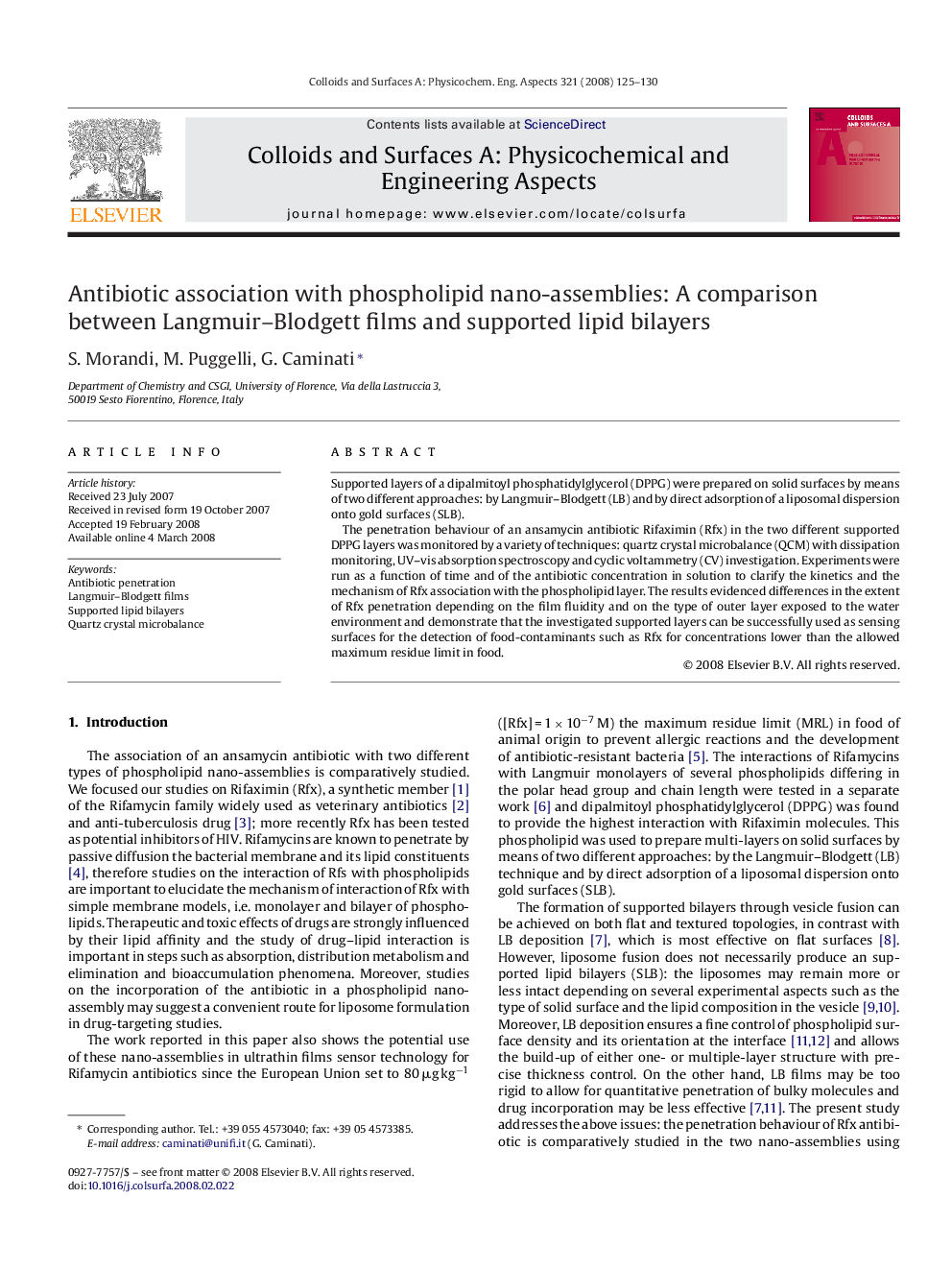| Article ID | Journal | Published Year | Pages | File Type |
|---|---|---|---|---|
| 596681 | Colloids and Surfaces A: Physicochemical and Engineering Aspects | 2008 | 6 Pages |
Supported layers of a dipalmitoyl phosphatidylglycerol (DPPG) were prepared on solid surfaces by means of two different approaches: by Langmuir–Blodgett (LB) and by direct adsorption of a liposomal dispersion onto gold surfaces (SLB).The penetration behaviour of an ansamycin antibiotic Rifaximin (Rfx) in the two different supported DPPG layers was monitored by a variety of techniques: quartz crystal microbalance (QCM) with dissipation monitoring, UV–vis absorption spectroscopy and cyclic voltammetry (CV) investigation. Experiments were run as a function of time and of the antibiotic concentration in solution to clarify the kinetics and the mechanism of Rfx association with the phospholipid layer. The results evidenced differences in the extent of Rfx penetration depending on the film fluidity and on the type of outer layer exposed to the water environment and demonstrate that the investigated supported layers can be successfully used as sensing surfaces for the detection of food-contaminants such as Rfx for concentrations lower than the allowed maximum residue limit in food.
